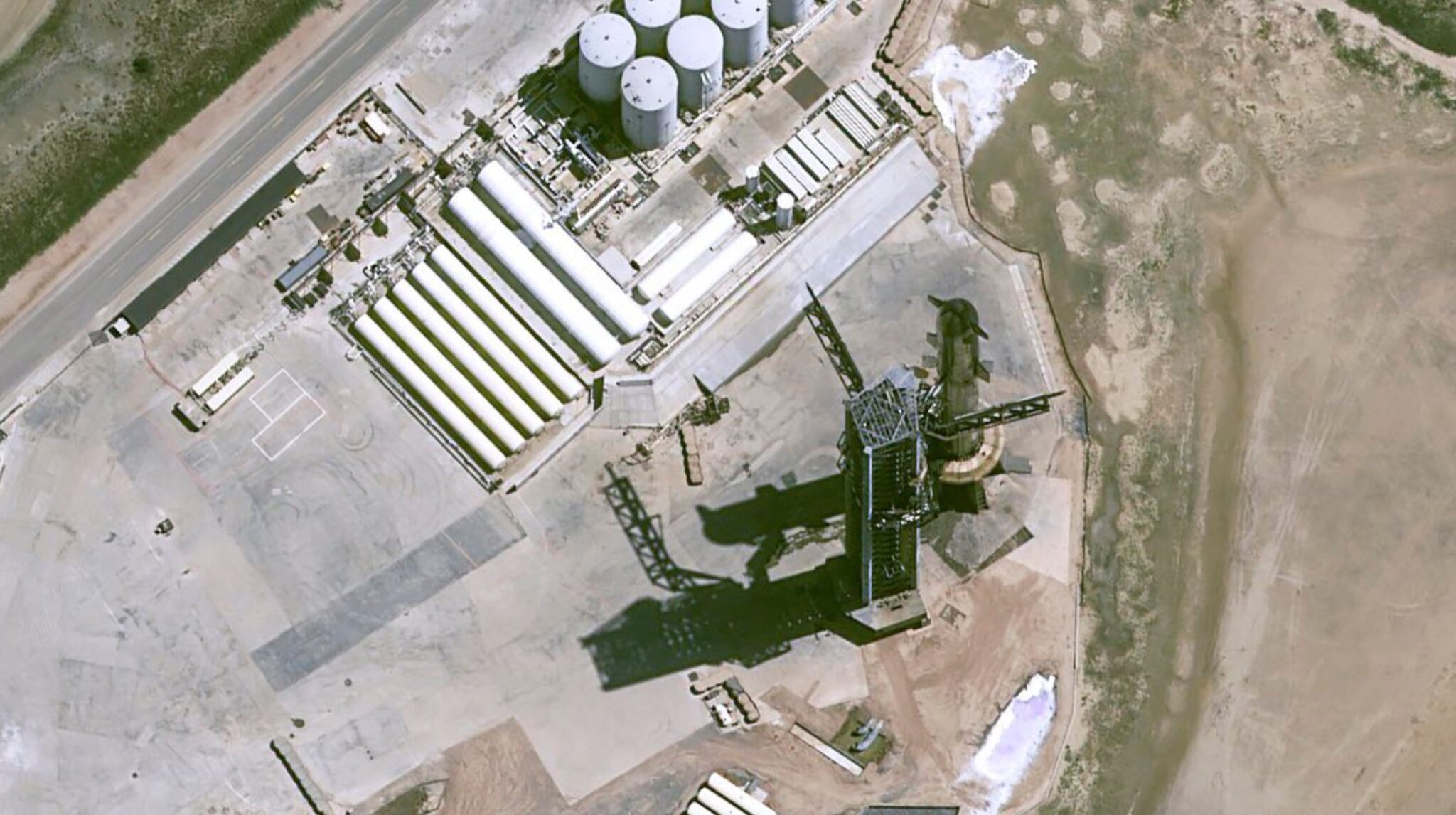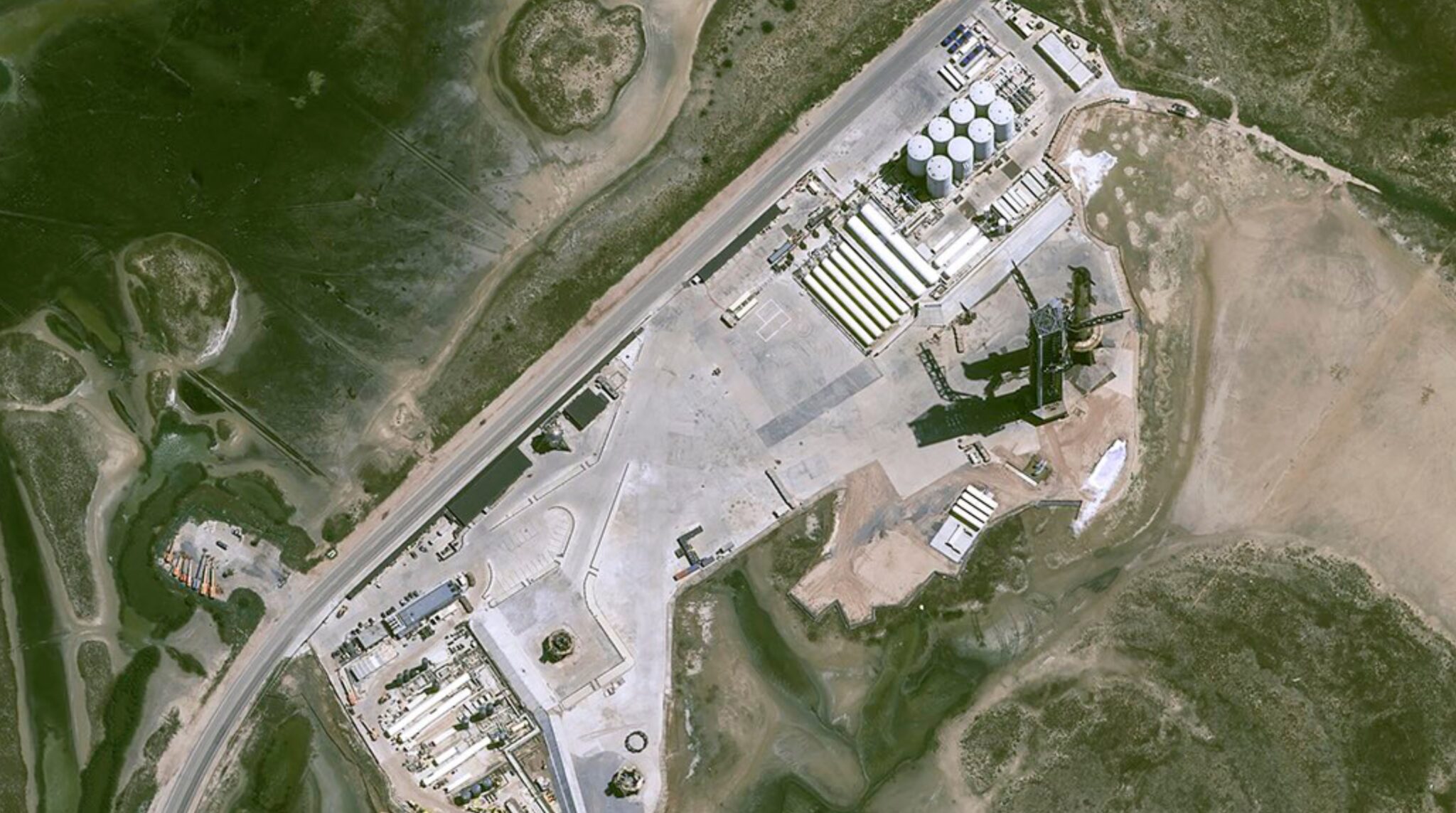The long-awaited launch of the Super Heavy rocket with the SpaceX Starship spacecraft, which took place on April 20 at 04.30 p.m. GMT+3, ended with an accident. This event was even clearly visible at a distance of 35 thousand km from the Earth’s surface. An American meteorological satellite witnessed the debut launch from space, as the megarocket Starship tried to reach orbit, but exploded in the sky.

The GOES-16 satellite, operated by the US National Oceanic and Atmospheric Administration (NOAA), is in geostationary orbit. Satellites at this altitude orbit our planet at a speed corresponding to the speed of rotation of the planet, which means that GOES-16 constantly sees the east coast of the United States.
“Something went wrong”
The satellite was able to clearly distinguish a huge cloud of smoke enveloping the launch pad in Boca Chica, Texas, when 33 Raptor engines of the first stage of the Super Heavy Starship bursted. Then, in the image from space, a condensation trace became noticeable, dissipating over the Atlantic Ocean.
Three neat features captured on GOES satellite imagery this morning during the first flight test of a large rocket from South Texas.
1) The rocket’s condensation trail
2) Shadow of the condensation trail
3) Lightning mapper capturing the rocket’s Rapid Unscheduled Disassembly???? pic.twitter.com/CkYm5xdDVJ— National Weather Service (@NWS) April 20, 2023
After a successful launch, Super Heavy flew for about three minutes. But when the first stage was set to separate from the upper stage of Starship, something went wrong. The accelerator could not separate from the Starship and began to return strongly against the movement, and then spectacularly exploded. In slow motion of GOES-16, you can see a small white spot that separates from the cloud shortly after launch and descends to the blue surface of the ocean.

The GOES-16 spacecraft also recorded an infrared image of the test launch, detecting temperature signs of the rocket engines when they were launched. The infrared sequence runs from a uniform purple/red background to a brighter red spot after the ignition of the first stage. Subsequently, the red spot turns green, as the engines become visible when the rocket is lifted, emphasizing the extremely high temperature of the fuel combustion process. The bright spot first moves upwards, but then suddenly changes direction when the rocket starts falling towards the ocean, and finally disappears.
Failed debut, but successful flight
The rest of the satellites could photograph the preparations for the launch of Starship, when technicians were preparing a rocket with a height of 120 meters before the debut flight. The Pleiades Neo satellite of the European aerospace company Airbus made a series of images close to the launch pad and the rocket towering above it.


Despite the fact that Starship failed to enter orbit during the debut launch attempt, SpaceX said it considers the flight a success and would repeat the flight in a few months.
Earlier we reported on how a “dead” NASA satellite fell to Earth.
Follow us on Twitter to get the most interesting space news in time
https://twitter.com/ust_magazine

